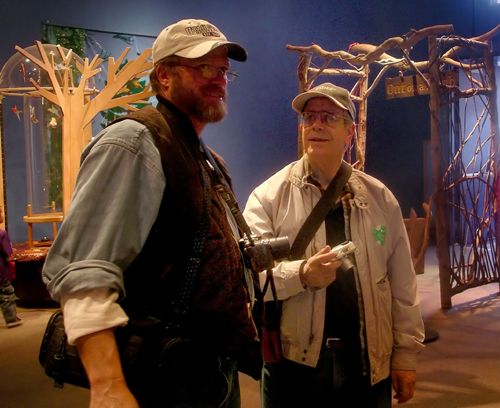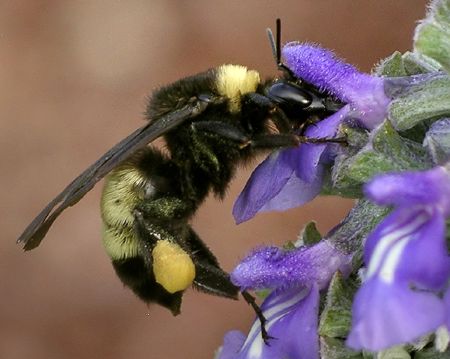
| Volume 19, Issue 12 | December 21, 2017 |

|
In this Issue:
|

| Volume 19, Issue 12 | December 21, 2017 |

|
In this Issue:
|
Scientific American several years ago (September, 2010) came out with an issue devoted to possible causes for our species' demise vs. positive predictions about our future. Lately a variety of circumstances, such as three big, destructive hurricanes in the Gulf of Mexico in quick succession and an apparent game of chicken occurring recently between the heads of two nuclear powers, have called these to mind again. So just for grins I thought I'd detail a few of the ways experts think Homo sapiens may be on the verge of major pro and con changes in the next few decades.
Mostly Positive - Factors that could enrich human experience in our lifetimes
1. Discovery of life on another world - Many see the likelihood of finding evidence of at least microbial life on another planet or a moon, for instance, Mars or Europa, as compelling within the next couple or three decades. Up till the present, we have been used to the idea that Earth is unique in the universe in having a biosphere. If there were proof of living things having evolved on other orbs, it would universalize the notion of biology potentially occurring anywhere under the right conditions, at once opening many avenues for further research, understanding, possible communication, even contact between us and beings elsewhere, and this could be as refreshing and humbling as was, back in the 16th Century, learning that the cosmos does not in fact revolve around Earth.
2. Substantial decreases in the average workweek - In the 19th and 20th Centuries, there were big reductions in the amount of time per day or week that humans were required to labor. A net effect of the industrial revolution was that production could get much higher even with much less time put in by the average worker. Stressful disruptions also occurred as this new reality was being adjusted to, but eventually people were being paid more for doing less work until, on average, an adult was not required to work more than about 40 hours a week, though previously the norm had been anywhere from half again to twice this amount. Think of agriculture, which at one time took up the majority of time for most American heads of households, whereas now 98% of us need simply shop at the local supermarket a few minutes a week. Similarly, today several factors are reducing still more the amount of time people on the whole must work in order for the required levels of production to occur for everyone to be at least minimally fed, clothed, warmed, defended, and provided with health care. In certain European countries, the workweek is already coming down, while standards of living remain high. There are attitudinal and political reasons this may take longer in the U.S., but here too, albeit after further likely periods of disruption, the number of hours people work a week will almost certainly be reduced. There simply is not enough work to go around for full employment at 40 hours or more a week, given the laws of supply and demand. Were the many farmers used to working 60 hours a week still to have insisted on that type of full employment, we might have had a coup, but even then their extra work hours would not have been required. Willy-nilly, average hours would need to have been reduced, and the only question would have been whether people would get more money to do other work for less hours or would have been unemployed on a massive scale. Students of such labor dislocations are predicting it is the number of hours a week we are required to work (for the same or, more likely, better pay) which will once more be crying "Uncle" in the new reality. On the plus side, there will be much more leisure time for hobbies, volunteering, and positive interactions with one another. Less hopefully, if adaptations are not so good, then as in the early 20th Century there could instead be a much greater "labor force" available for wars, plus the political unrest necessary to fuel these conflicts.
3. Near eradication of certain lethal diseases - Just as smallpox, which had earlier killed close to a billion people, was eradicated in 1977, so medical science now seems on the threshold of removing the threat from several more diseases or conditions over the next few decades. On the chopping block, for removal or significant reduction, include TB, certain common types of cancer, malaria, measles, polio, rubella, and AIDS. The problems are as yet challenging. People sometimes refuse their children treatment with vaccines, leading to new, local outbreaks. Regional strife can also cause breakdowns in routine healthcare and preventative measures. Happily, one thing scientists believe is only a very remote hazard is the release of quite lethal to humans viruses from thawing permafrost regions.
4. Gene editing - Via a relatively new technology, Clustered Regularly Interspaced Short Palindromic Repeats (CRISPR) plus another, CRISPR-associated endonuclease (Casg), a DNA cutting enzyme, it is now possible to remove undesirable gene's from human embryos. In scientific and medical points of view, this is an exciting new threshold, promising for some who can afford it the possibility of deleting prior to birth highly undesirable traits or disabilities. Even if on ethical grounds many doctors in the U.S. choose not to use this capacity - and in fact for a long time it may be illegal here except for highly regulated research conditions - is it reasonable to expect all doctors around the world will see it the same way? Parents with sufficient funds may go elsewhere for the treatments they seek. Just as in Germany in the 1940s there were experiments considered highly immoral on human subjects, so now biologists and physicians in China, Indonesia, etc., may find it in their own or their national interests to pursue such now experimental and questionable activities. Leaving aside what is right or wrong, what are the potentials here? Might we find that those with Down's syndrome or cerebral palsy tendencies or who are prone to certain terminal cancers ought to be "corrected" before leaving the womb? Might it indeed be unethical not to fix them? Maybe there is a right to gene editing, just as many feel there is a right to a high level of health care for everyone. Otherwise, the rich will be able to go abroad and get this kind of special care, but
 Android - Par Photo by Gnsin - Gnsin, CC BY-SA 3.0, httpscommons.wikimedia.orgwindex.phpcurid=234900 |
5. Artificial intelligence (AI) - Much is made in sci-fi of the dangers of AI. These hypothetical beings of vast awareness and of calculating capacities way beyond our own might figure they could do even better if unencumbered with their lowly biological creators. However, as my wife has pointed out, robots will almost certainly lack motivation, for how would they be programmed to have our types of emotions? As such, they are likely to be marvelous tools for our use. Such uses as we put them to will determine whether they are, from our points of view, good or bad. Just as fighter-bombers can do immense destruction if so utilized or can be part of protective shields that are to our benefit, so with these new machines. Let us choose wisely how they may be employed, and then reap the many benefits. Such possible boons include but are not limited to: a. Instead of being a net eliminator of jobs, AI might create many new opportunities for creative niches that humans can exploit in the workplace; b. AI could in the reasonably near future be taking over more of the kinds of tasks that are repetitive and not very rewarding in the first place; c. AI offers kinds of senses that we are just not that good at, for instance, ways of seeing or hearing that are beyond human optics or acoustics; d. AI can go into places that are too dangerous for our living bodies, like radioactive sites of a nuclear accident; e. AI can "man" expeditions to foreign worlds and send us back their data, so we do not have to put our more vulnerable bodies at risk; f. As with present-day GPS devices, AI devices can from a myriad of information calculate the best ways of doing things and provide the solutions in a fraction of the time it would take us. In partnership with our new AI "companions," we shall find we can do much more than was the case before, in medicine (and AI is already performing some delicate surgeries, for instance, carefully and successfully removing a tumor from a friend of mine), financial transactions, military applications, and much more. I predict, for example, that when AI takes over driving most of our vehicles, the accident rates, while not zero, will have come down considerably.
Mostly Negative - Factors which could threaten modern civilization in our lifetimes
1. Internet communication and utility shutdowns - Ten years ago, intelligence communities and think tank members warned the odds were then one in two of our experiencing widespread, prolonged interruptions of the internet, communication, and power within the next decade, due to sabotage in one form or another. Happily, we have so far dodged that bullet, yet the capacities of hackers to mess with such services have only increased since. Civilization as we know it in developed countries is now heavily dependent on easy applications of rapid internet connectivity. Electricity grids, banking, phone communication, assets trading, medical care, even simple commercial transactions of all kinds, such as the sale and purchase of gasoline, milk, baby formula, clothing, heating supplies, vegetables, and bread, are vulnerable to hacking and viruses. Naturally, efforts are proceeding to stay ahead of those with malicious intent. However, the ease with which our identity information is being routinely captured suggests it is a matter of time, likely measured in but months or years, before more serious and general harm is done via misuse of the internet.
2. A pandemic - The last great pandemic, the so-called Spanish flu, occurred in 1918-1919, infected about one-third of the population worldwide, and killed an estimated 50 million or more people, about 3% of the total human population then, far more in fact than had been wiped out by World War I. Medical care is more advanced now, so hopefully the same stats would not prevail, yet it is easy to imagine how resources might become overwhelmed and many be left without vital assistance for long periods, as evidently has recently occurred in the U.S. Territory of Puerto Rico, where over 1000 U.S. citizens are estimated to have died there from Hurricane Maria and its aftermath, per the NY Times, and, many weeks after the storm's passage, power or clean drinking water have still not been restored for over a million. If again 3% of Earth's human population were killed, there would be in excess of 200,000,000 deaths from a modern pandemic. Were one-third of us to be infected, that would mean illness for 2.5 billion individuals. A big difference between the current situation and 1918 is the ease of travel that now prevails. Supposing individuals exposed to the flu were not yet symptomatic, airplane transport would likely assure its spread to almost all continents in hours or days. It is speculated we may be more susceptible to a devastating pandemic today because most of us have not been exposed to a readily transmitted, high mortality influenza and so have few immunities built up against one. Health experts indicate a pandemic has great potential to kill millions in the next decade.
3. A solar super-storm - Just as people worry about sophisticated hacking or that internet viruses might shut down power, modern communications, or other utilities, so there is concern that vast solar activity in the form of coronal mass ejections (CMEs) might affect our software and infrastructure in devastating ways. Odds of this occurring are not regarded as huge; however, were we to be affected by a CME, it likely would destroy the functioning of some of our satellites plus power or communications grids for a time, no doubt having a large
 NASA derivative image of dynamic solar activity |
4. Weapons of mass destruction (WMDs) - This possibility runs the gamut from a dirty bomb, with radioactive material blown all over part of a large city by a non-nuclear explosion, likely placed and set off in a metropolitan area by a terrorist, to release of anthrax or some other lethal biological agent, use of chemical weapons such as chlorine or nerve gas, an atomic bomb blast, maybe something that could be carried in a container as small as an ordinary valise or suitcase, to a missile launch, the warhead tipped with a small atomic bomb and headed toward a Japanese, South Korean, or U.S. city, or even a volley of multiple hydrogen warheads heading for the continental United States. The people whose job it is to calculate the odds of one of these events occurring and affecting American interests now say they believe there is an almost 100% chance of some such event happening in our lifetimes, but that the odds go down a lot, though not to nothing, if the question is whether or not we shall be attacked in, say, a Russia- or China-style mass first strike of hydrogen blasts. Even when North Korea is the potential aggressor, the think tank prognosticators believe we are dealing with a rational enough actor that a WPD is unlikely to be headed for an American city, assuming we do not land the first blow. However, a major WMD terrorist incident involving one or more U.S. cities, they feel, is quite possible even in the next couple decades. Indeed, even in 2010, the Scientific American article, "Laying Odds on the Apocalypse," by John Matson, suggested the chances, per "researchers' expert opinions," were better than 50-50 of a small nuclear attack on an American city by 2025.
5. Runaway Global Warming - Too many variables exist to assess this potential threat, particularly since there are things as yet untried that humans could do to partially and temporarily offset rising temperatures, for instance putting large amounts of sulfate aerosols into the stratosphere via balloons, missiles, or aircraft dispersal. Like global warming itself, these would have uncertain side-effects and much variability in their effects on any particular part of the planet's surface. Yet theoretically they could allow for the dimming of solar radiation at the planet's surface sufficient to limit the rise of global temperatures, giving humanity more time to adjust to a lower level of carbon-based fuel use, lowering in turn greenhouse gas emissions. Will people have the political determination, international cooperation, and stability to lower temperatures in this way while also dealing effectively with the inevitable local side-effects?
What can be said is that, short of such measures, average global temperatures will likely rise a couple degrees Centigrade, or about 3.6°F, by the end of this century. Major ice sheets are already melting at a rapid rate, raising sea levels. Such ocean rises will probably persist, potentially by about 12 meters (roughly 39 feet), sooner or later forcing evacuation of most coastal regions, with the affected populations numbering at least several hundred million and with unprecedented economic, diplomatic, and military impacts.
Apart from the oceans' rise and the dislocation of coastal communities, agricultural losses will be devastating, and the effects on human health severe. Probably by mid-century, substantial drought, fire, water scarcity, flooding, and hurricane activity would be occurring as well. A heat wave in Europe killed many thousands, 15,000 in France alone, in 2003. We are not used to the kind of changes which may be coming if concerted preventative actions are not taken soon.
Summing it all up, as in the Chinese curse, we evidently are living through interesting times. There are abundant challenges and opportunities ahead. What an exciting period. It has been pointed out that if the universe is expanding and our cosmos' distinctive physics assures it will not again contract, then compared with a future which may be a trillion of Earth years in duration or longer, we are beings of relative intelligence seeing all this from near the very beginning of all that is about to occur. If we survive these metaphorical birth pangs for our species and all other life on Earth, what a vast and awesome future might await us. May it be so!
Christmas is coming and red is bustin' out all over! Yes, I know I've just combined the lyrics from two completely different songs, but there's nothing more catchy than famous phrases with happy melodies. It is also no accident that these two tunes reference opposite seasons. While opposites might, or might not, attract, they also hold a special fascination for us. So why is red so ubiquitous for this time of year? It's easy to understand the symbolism related to the religious holiday, but the icons and their meanings must have originated long before our species marked the date just a bit over 2,000 years ago. From the time hominids left the climactically stable, warm heart of Africa and had to deal with marked annual seasons in the more extreme latitudes, I'd place a big bet that winter was NOT their favorite time of year. Finding food, keeping warm (remember, we don't have fur now and didn't back then either), and trying not to get too bored during long, dark nights, were probably less than enjoyable to our ancient ancestors. So, with the creativity made possible by our big brains, we figured out ways to feel better during dismal times, and a bright color like red was probably a real asset to the cause.
 Humans, unlike many mammals, have good color vision, which lets us find ripe fruit as well as pleasure in multihued juxtapositions. During the growing season, red jumps out at our eyes in the midst of green, which is abundant for obvious reasons. As leaves wither and photosynthesis declines in the autumn, those same brightly hued berries become even more pronounced against the resulting bland background of browns. Then comes the white snow, turning our previously vibrant world into a monotone landscape.
Humans, unlike many mammals, have good color vision, which lets us find ripe fruit as well as pleasure in multihued juxtapositions. During the growing season, red jumps out at our eyes in the midst of green, which is abundant for obvious reasons. As leaves wither and photosynthesis declines in the autumn, those same brightly hued berries become even more pronounced against the resulting bland background of browns. Then comes the white snow, turning our previously vibrant world into a monotone landscape.
It's little wonder that bright red and green have come to symbolize that darkest and coldest time: the winter solstice. And red berries that persist into the season are an easy way to get our color fix. Everybody knows that holly berries are red. Another popular plant at this time is mistletoe. It also has berries, but they are not nearly as often noticed, being a sort of creamy white tint. One other aspect to this contemplation is that red does not necessarily equal edible. Cranberries and raspberries are delicious treats, but, while birds can eat holly berries, they are poisonous to us mammals. Maybe the added danger factor of some red berries being toxic is yet another reason we find them enticing.
That some, and in fact many, red berries are delectable to birds but noxious to humans and other mammals is no surprise. The purpose of the fruit is to reward an animal for helping with the dispersal of seeds, which are the next generation of any flower, tree or shrub. The teeth of mammals can crush and kill even very well-packaged seeds, which is no help to a plant's reproductive goals. Birds, on the other hand, not only lack teeth, but they use airborne efficiency when it comes to dropping those intact baby plants into new habitats. With both pollination and seed distribution, plants have evolved elegant ways to utilize their animal neighbors for tasks that are difficult to perform if one is rooted in one place.
No matter what the practical mechanisms involved, the end result of all this is that we have a surfeit of red berries to tantalize our palate, enchant our eye, and brighten our world.
| A Bunch of Berries for Your Enjoyment |

The two handsome men having a pleasant chat are none other than Tom and Larry, during a visit to the Minnesota Children's Museum in Minneapolis. The excursion took place on Jan. 3, 2010, while Tom, Vicky, Lucas, Isabella and Amie were hosting Larry and Valerie during a week-long visit at their Turtle Lake, WI, farm. As the heavy clothing suggests, the weather was typical for the area in the middle of winter, with lots of snow, ice and incredibly low temperatures. After enjoying such activities as cross-country skiing, ice skating, a pottery painting party, a visit to the Como Gardens conservatory, other family outings, delicious meals and stimulating conversations, the museum, with its fascinating and engaging exhibits and numerous photo ops, was the perfect conclusion to a very fun time.
![]()
| (The Terra Tabloid is a venue for the discussion of issues pertaining to the past, present, and future of our planet and human interaction with it.) |
AL has been in the news a great deal of late, and it might be easy to get too narrow an impression of this state and region. Regardless of one's politics, AL actually has a lot going for it. My wife, Valerie, recalls neat visits to the beaches at historic Fort Morgan, located on the coast and at the tip of a peninsula where in prior conflicts it could offer protection to the big harbor at Mobile. I recall staying for interesting training sessions at Fort Rucker, the center for Army aviation. We both cross AL twice, of course, each time we take driving trips from TX to visit her mom in Ocala, FL.
Much of what makes AL intriguing, though, is not so readily apparent to those there for but short stays or merely reading the latest headlines. For instance, did you know coastal AL used to be high enough above sea level it was as if there were small mountains there next to the ocean? At the foot of these, 60,000 years ago great cypress forests grew near an ancient riverbed. The ocean level rose so quickly that some of these forests were buried, still rooted in their soil foundations. They were subsequently buried in mud and thus preserved from decomposition till, early this century, strong currents generated by a hurricane exposed still intact trees, now available for scientific investigation and yielding abundant information about the geology, climate, fauna, and flora there before humans arrived.
Yet the famous entomologist E.O. Wilson has described his home state as having other major and unique qualities for naturalists, calling it "America's Amazon," as noted in an Alabama Public Television film of the same name. Here, it is pointed out:
 Mobile Bay, Alabama (1970s view from orbiting NASA Skylab Space Station) |
Yet AL has another distinction as well, the state having had the greatest number of recorded extinctions in the nation. Species are disappearing here at a rate about twice as great as anywhere else in continental U.S. The remaining richness of its ecology is threatened further by almost unchecked environmental degradation. The Mobile-Tensaw Delta is one of ten sensitive locations throughout the U.S. that, if preserved in conditions closer to their natural state, could protect most of America's endangered species.
Freshwater tributaries, forestlands, and the immensely diverse habitats throughout the state's delta, rivers, and bay network are harmed by a combination of neglect and active local efforts to pursue other interests. For instance, there are, among other challenges, a lack of inclusive, coordinated regional growth planning, inadequate water conservation, virtually unregulated agricultural pollution, damming and diversion of rivers whose natural flow is key to area biodiversity, contamination from untreated industrial waste, problems with increased aquifer salinity in coastal areas, and greater frequency and severity of droughts, thought connected to global warming.
Severe environmental losses will affect not only the state's magnificent and beautiful waterways but also tourism, jobs, hunting or fishing attractions, swimming, and supplies of healthy, safe water for drinking and bathing. So, AL may be at a crossroads. With greater attention to preserving the wealth of its living wonders, there is much to be gained for humankind and nature alike.
For those wishing more info or to see the Alabama Public Radio movie, "America's Amazon," please check for links using the title of this piece at your favorite search engine.

Although diversity in the rest of the U.S. is higher, only one bumble bee species seems to live here in Austin, TX: the American bumble bee (Bombus pensylvanicus). While this insect is on the decline in many other areas, it is thriving around here and can be seen during all warm months.
The bumble bee is our only social native bee (honey bees originated in the Old World) and its nests are usually in the ground, often under bunch grasses. The queens hibernate through the brief winter and start their nests early in the spring. Once a queen has raised her first brood, they become the workers who will take over tasks such as gathering pollen, defending the nest and feeding the young. All workers are females, the offspring of the queen and a drone with whom she mated. As a nest's population increases, the queen eventually lays unfertilized eggs, which develop into the drones (males). These are larger than workers and so require more resources to successfully mature. The same is true for future queens, which are also produced late in the year. Towards the end of the season, the colony's queen exerts less influence over her workers and some of them might lay unfertilized eggs, thereby producing their own male offspring.
A headline from money.cnn.com, dated October 24, 2017, read "Caution: U.S. Stocks have rarely been this expensive," the underlying article by Matt Egan. Since then, the S&P 500 Index has risen a further 4.17%, partly in anticipation of the Trump Administration and Congress successfully passing a tax bill this year. Is it time, then, to jump on the bandwagon and invest more funds, since it appears likely a tax bill will indeed become law, probably this week? Not so fast, if one would take seriously the advice from Matt Egan's piece. Yes, stocks may continue to surge, and few are for long successful at timing the end of a bull market. However, by most standards average common stocks are overvalued, so the bigger risk to investors is experiencing loss of principal, rather than missing out on the rest of this bubble.
Here are a few of the key ways to look at market valuation and what they are telling us today:
The Ratio of Total Market Cap to Gross Domestic Product (quite similar to the so-called Buffett ratio) stood as of the close of trading 12/19/17 at 143%. This ratio has achieved a higher reading, getting up to 153% in 2000, only to be followed by big drops in the stock market later that year, again beginning in 2002, and once more starting in 2008, when we saw the worst financial debacle since the Great Depression. Buffett considers his ratio to show a good buying opportunity when it stands at 80% or below, 56% of its current level. The website www.gurufocus.com estimates that with its present level this ratio is forecasting a loss in average stock prices of nearly 2% a year after factoring in the usual dividend, or a close to 4% fall in the average annual stock price. Investors knowledgeable of these odds must expect they will either weather the storm of coming market declines or else be clever enough to ride the market up to close to its top, then get out in time, and later get back in at again close to the right time, once prices have dropped substantially.
S&P 500 Median Stock to Estimated Earnings Over the Next Year (the S&P 500 median stock to forward earnings or projected P/E ratio) as of the close of trading on 12/15/17 stood at 19.82, higher than 99% of the time. On average the median forward P/E for the S&P 500 Index has been 12.80, 65% of its current level. Pioneer value Investor Benjamin Graham suggested a good time to buy is when the P/E of a large, strong, profitable company with low debt is no more than 7.00, just 35.32% of the current S&P 500 Index median level.
| Company | Ticker Symbol | Recent Price | Dividend Yield |
|---|---|---|---|
| Amgen | AMGN | $177.04 | 3.00% |
| CVS Health | CVS | $73.08 | 2.80% |
| McKesson | MCK | $162.60 | 0.90% |
| Schlumberger | SLB | $62.09 | 3.20% |
| WPP plc | WPP | $84.43 | 4.61% |
The Value Line Investment Survey Average Yield (among dividend paying stocks covered by the investment service). Per a public library's recent issue, the survey's median yield stood at less than 2.00% a year, under half its level in early March, 2009, one of the better times to be a common stock investor. Lately the average AAA rated corporate bond offered the rather competitive income level of 3.5% and without stocks' volatility.
Is there a way to be an investor at these levels and have it still make sense? After all, markets appeared overvalued in 1996, yet went on to much loftier heights before finally collapsing to more reasonable values. Yes, but in my view only if willing to accept a lower return than what has been provided since early 2009 by the S&P 500 Index.
As in the table above, one can pick a handful, maybe up to five, financially strong, dividend paying stocks with low debt and invest a roughly equal amount in each, up to half of one's liquid assets. Leave the balance of one's funds in a money market fund or a low-cost total bond index mutual fund.
If the market value of your portfolio of stocks rises 20% or more, i.e. raises your total liquid assets by 10% or more, sell shares till your stocks are again valued about equally in the stock portion of assets and these equities are again no more than about 50% of your liquid assets. Repeat indefinitely.
If instead your portfolio of stocks falls 20% or more, i.e. lowers your total liquid assets 10% or more, use your less volatile holdings to buy shares till your stocks are again valued about equally in the stock portion of assets and these equities are again about 50% of total liquid assets. Repeat indefinitely or until the total market cap to GDP has fallen to 80% or below. In the latter instance, gradually use remaining non-equity liquid assets to buy more common stock shares till fully invested in financially strong, now low-priced, dividend paying stocks.
For even more conservative folks, a way to probably seldom lose money in stock market investing is to gradually buy the S&P 500 index (up to 90% of liquid assets) via a low-cost exchange traded fund when its average yield is 3% or greater and sell when it has fallen to 2% or below, keeping the remainder of liquid assets in a low-cost total bond index mutual fund. Repeat indefinitely.
Meanwhile, happy surfing amid the ebbs and flows of a stock market's interesting yet demanding waves!
| |||||||||
|
The turnover from one year to the next is often a time of reflection, with many people offering wishes of peace, happiness, love, tolerance, charity, kindness, cooperation and comfort. It is, however, all just talk unless acted upon in real life. With practice, perhaps we can better live the spirit of this season all year 'round.
|
| For others who may have chanced upon this site, larvalbug bytes is a monthly family-and-investment newsletter, put out by an old codger and sweet thing, with sometimes a little help as well from our engaging pooch, Peri. We invite readers' comments by and would also be happy to readers when new issues are published. Articles and stories from back issues are available in our archives. |

|
Copyright © 2017 by LARVALBUG
"Humbug" and larvalbug web design by Valerie.
![]()